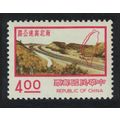Worthing, W. Sussex - St. Andrews Church - postcard by Davis c.1905
- Condition : Used
- Dispatch : 2 Days
- Brand : None
- ID# : 182678735
- Quantity : 1 item
- Views : 192
- Location : United Kingdom

- Seller : justthebook (+1703)
- Barcode : None
- Start : Wed 19 Jun 2019 19:19:27 (BST)
- Close : Run Until Sold
- Remain : Run Until Sold
More Listings from This Seller view all
Seller's Description
- Postcard
- Picture / Image: St. Andrews Church, Worthing [West Sussex]
- Publisher: J Davis, Queen Victoria Street, London 'Victoria Series' (155..)
- Postally used: no
- Stamp: n/a
- Postmark(s): n/a
- Sent to: n/a
- Notes / condition:
Please ask if you need any other information and I will do the best I can to answer.
Image may be low res for illustrative purposes - if you need a higher definition image then please contact me and I may be able to send one. No cards have been trimmed (unless stated).
------------------------------------------------
Postage & Packing:
Postage and packing charge should be showing for your location (contact if not sure).
No additional charges for more than one postcard. You can buy as many postcards from me as you like and you will just pay the fee above once. Please wait for combined invoice. (If buying postcards with other things such as books, please contact or wait for invoice before paying).
Payment Methods:
UK - PayPal, Cheque (from UK bank) or postal order
Outside UK: PayPal ONLY (unless otherwise stated) please. NO non-UK currency checks or money orders (sorry).
NOTE: All postcards are sent in brand new stiffened envelopes which I have bought for the task. These are specially made to protect postcards and you may be able to re-use them. In addition there are other costs to sending so the above charge is not just for the stamp!
I will give a full refund if you are not fully satisfied with the postcard.
----------------------------------------------
Text from the free encyclopedia WIKIPEDIA may appear below to give a little background information (internal links may not work) :
*************
St Andrew's Church (in full, the Church of St Andrew the Apostle) is an Anglican church in Worthing, West Sussex, England. Built between 1885 and 1886 in the Early English Gothic style by Sir Arthur Blomfield, "one of the last great Gothic revivalists",[1] the church was embroiled in controversy as soon as it was founded. During a period of religious unrest in the town, theological tensions within Anglicanism between High church Anglo-Catholics and Low churchAnglicans were inflamed by what the latter group saw as the church's "idolatrous" Roman Catholic-style fittings—in particular, a statue of the Virgin Mary which was seized upon by opponents as an example of a reversion to Catholic-style worship in the Church of England. The "Worthing Madonna" dispute[2] delayed the consecration of the church by several years. English Heritage has listed the building at Grade C for its architectural and historical importance, and the adjacent vestry and vicarage are listed separately at Grade II.
Worthing experienced fitful but often rapid growth throughout the 19th century after it became established as a town and seaside resort at the start of the 19th century. Between 1801, two years before an Act of Parliament gave it the status of a town, and 1881, the population increased from about 2,000 to 14,000.[3][4]The era coincided with a revival in Anglican Christian worship: this was especially marked in Brighton, Worthing's larger and more illustrious rival resort further along the Sussex coast, whose vicar Arthur Wagner funded and built many churches across the town.[5]
Sussex was a religiously conservative county,[6] and by the middle of the 19th century—after the Catholic Emancipation—serious disputes arose between traditionalist Protestant Anglicans, who regarded Catholic-style worship with suspicion, and the newly emerging Anglo-Catholic practices of Anglicans who were influenced by the Oxford Movement (Tractarianism) of practitioners such as Edward Bouverie Pusey and John Keble. The disagreements were again focused on Brighton,[5] but ill-feeling had spread to Worthing by the 1850s. The town had a long tradition of riotous bonfire parades,[7] and the "Bonfire Boys" started to focus their attention on Roman Catholics and Tractarians. Effigies of John Henry Newman and an unidentified Tractarian were burnt in 1853 and 1859 respectively;[8] clergymen who had Tractarian beliefs were considered to be traitors to the Protestant cause.[6]
Other groups—including the police, wealthy residents and the Salvation Army—became the Bonfire Boys' target later in the century; this culminated in the Skeleton Army riots of the 1880s, when Worthing's newly established Salvation Army was violently opposed.[9][10] The Roman Catholic community became accepted, and anti-Tractarian feeling briefly receded.[2]
In the early 1880s, a group of High church, Anglo-Catholic Anglicans sought to establish a church of that character in central Worthing. George Wedd, the owner of Charmandean House (a large Georgian house, now demolished),[11] was the main promoter of the scheme, and he found and bought some land in 1881 in an area which had seen recent residential development.[12][13] He also provided much of the funding for the construction, and Arthur Blomfield was contracted to design and build the church. Preparation work started in 1882, the foundation stone was laid on 13 June 1885,[14] and building work continued until 1886.[13][15][16] Disagreements had already begun in November 1882, when the Worthing Town Commissioners sought permission to take territory from the parishes of several other churches in the town—St Mary's, Christ Church and Holy Trinity—and form a new parish for St Andrew's Church.[13][17] The clergy of the three churches opposed the proposal, arguing that their parishes were not "large in extent and population, and insufficiently supplied with ministers and church accommodation" as stipulated in the terms of the proposal.[17] It was argued that the site for St Andrew's Church was in the part of Worthing where the highest concentration of churches already existed: it would be the ninth Anglican church or mission hall in an area of 1 square mile (2.6 km2) encompassing central Worthing and Broadwater.[18]
As debate over this issue continued, more controversy erupted when in late 1886, as the church was being completed, it was discovered that a Lady chapel with a statue of the Virgin and Child had been included in the design.[2] To opponents of Anglo-Catholic worship, the representation in statue form of Jesus's mother symbolised a return to the practices that the English Reformation had sought to end: it was claimed that idolatry and ritualism would be encouraged and Anglican churches would start to be decorated in the same manner as Roman Catholic places of worship.[19] The statue was soon referred to as the "Worthing Madonna",[2][20] and became the focus of the ill-feeling around the church: one writer, chronicling the day of the consecration, started his account by referring to the "peculiarly obnoxious Madonna".[20]
The consecration of the church, set for 1886, was postponed because of the strength of feeling in Worthing (and possibly in an attempt to prevent religious riots similar to those of the Skeleton Army two years previously).[2] The vicar of the Holy Trinity, other Worthing vicars, a local army Major-General and the local magistrate were among a group of people who presented a petition to the Bishop of Chichester asking for the consecration to be stopped,[13][21] arguing that the Madonna was "at variance with the spirit and teaching of our Reformed church".[21] The Bishop, Richard Durnford, held out against the protests, cautioning against the disrespectful use of the term "Madonna" and recommending that the group's grievances be taken to a higher court.[22] The consecration was eventually scheduled for 1888, two years after the church was finished; a final appeal to the House of Lords was unsuccessful,[12] and the ceremony was held on 1 August 1888 by Bishop Durnford.[14][20] The first public service had been held on 27 May 1888.[14]
The ill-feeling between Anglo-Catholics and their opponents soon died down, apart from some brief controversy in the mid-1890s over some fittings in Christ Church.[22] After World War I, there was a further brief dispute over the design of a war memorial in St Andrew's Church, which took the form of a shrinedepicting the Crucifixion designed by Charles Eamer Kempe. It was installed in 1919. The names of local war dead were inscribed on the a panel on the chancel wall.[23]
Since its opening, the exterior of St Andrew's Church has experienced little change, and there have been only gradual increases in the decoration of the interior.[14] A new marble altar was placed in the chancel in 1902, one year after a wooden altar was added in the Lady chapel. A rood screen, carved in oak, and walnut-wood choir stalls were added in 1905 (the latter were replaced by oak stalls in 1932). Another altar, this time in the south transept, was installed in 1922. The red alabaster piece was designed by Charles Eamer Kempe. A green marble altar was donated to the church in 1950 and was placed in the north transept.[24] Work undertaken in the 1970s included the painting of the internal brickwork and the creation of a glass-walled memorial to a former vicar.[14]
Like many 19th-century churches in Worthing, St Andrew's established a mission hall as the population of Anglican worshippers grew. The building, in Victoria Road, was founded in about 1900 but has since been demolished.[3][13]
Listing Information
| Listing Type | Gallery Listing |
| Listing ID# | 182678735 |
| Start Time | Wed 19 Jun 2019 19:19:27 (BST) |
| Close Time | Run Until Sold |
| Starting Bid | Fixed Price (no bidding) |
| Item Condition | Used |
| Bids | 0 |
| Views | 192 |
| Dispatch Time | 2 Days |
| Quantity | 1 |
| Location | United Kingdom |
| Auto Extend | No |



 for 1 item(s)
for 1 item(s)










